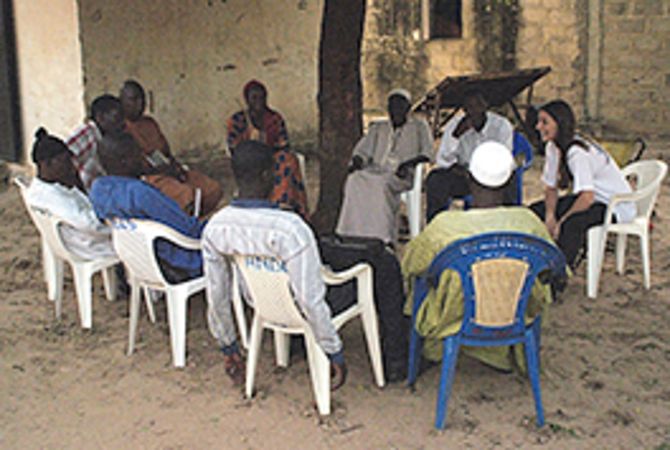In 2009 DAHW supported 287 projects in 32 countries. In most cases the partners of DAHW are independent local organisations that receive financial support from DAHW. In some countries this is even a statutory obligation since only organisations being founded locally are allowed to work in the country.
But even without this direction such cooperation is useful because the partners know their surroundings and they can also find further financial funds, for example, from authorities, enterprises or private donors in the project countries. However, what will always remain to be constant is that DAHW will control the use of the funds. At the end of the day, donors want to know exactly what is being done with their money.
A new handbook outlines the project work of DAHW and comprises all administrative and technical rules. It forms the basis for cooperation with the country offices and of the country offices with the project partners.
How is a grant achieved for a project?
Of course we must first know with whom we want to cooperate in future. Therefore, the criteria for new projects are defined in their particularity.
What does a project cycle look like?
All partners are requested to submit their planning data – finances, patients and staff – to DAHW by a fixed date. The country teams – a medical doctor, a project officer and a project assistant – will examine the submitted figures and will clarify open questions if needed. The requested country budgets will be included in the total budget. After the approval of the Honorary Board the partners receive their grant for the year to come.
During one project cycle – one year – the project countries and partners are visited not only by local co-workers, but also by co-workers from the DAHW head office. The purpose of these visits is to discuss successes and problems and, if needed, to find a solution together. The visits help the co-workers from the head office to get a better understanding for the pre-conditions of the work in the respective country. So, for example, a support programme for leprosy patients cannot just be transferred from Ethiopia to Pakistan.
The project partners regularly send their data, for example the number of new patients detected and the cure rate, to DAHW by a fixed date. Together strengths and weaknesses are analysed and, as the case may be, steps are planned for improvement. In focus are the patients – do they get the qualitatively best possible diagnosis and treatment, do they find help if there are complications, do they finish their treatment as prescribed, are they cured?
These results are the basis for the next plan. Another criteria is the adequacy of the costs. Co-workers of DAHW check and evaluate these figures – always considering better services for the patients.
The use of the donated funds is also checked locally. Every year the accounts of the country office are controlled by an independent and approved institute. These audited project expenses are part of the annual statement of accounts which DAHW has examined by an independent auditing society. This audited statement of accounts is submitted to the annual meeting of members for approval – at this point in time only the financial year has been officially closed.
The road to cooperation
Project application:
Do the aims, target groups, risks, duration and budget comply with the structures of DAHW?
Which institution will realise the project, are there any references?
Medico-social check:
Will the project achieve the aims of DAHW (sustainable help for people who are threatened by diseases of poverty)? Is the project needed in the sense of these aims?
Financial check:
Do input and output comply with each other? Will the project fit in the budget of DAHW throughout its duration?
Cooperation:
All aims and foci of the project - rights, obligations and risks – are fixed in an agreement between DAHW and its new partner.
DAHW co-worker and patients in a DOTS centre of Kolkata/India. Here TB patients receive their daily life-saving drugs, which they must swallow under supervision.
DAHW representative Manfred Göbel takes care of Manuel in Cuiaba/Brazil. Due to leprosy reactions the farm-worker can hardly move his hand and suffers from permanent pains.
Leprosy treatment in the hospital of Buluba/Uganda. Patients who just fell ill as well as former patients are checked by the specialists of DAHW and are receiving assistance here.
Brother and sister are waiting for the TB examina-tion at the hospital “Mile 4” in Abakaliki/Nigeria. The DAHW co-workers often check relatives in order to early detect signs of transmission.



